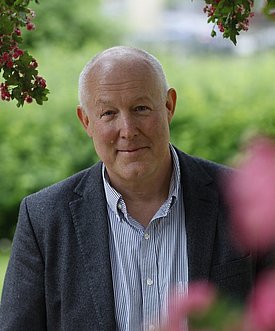Terry Hartig, Ph.D., M.P.H. ¶

Institute for Housing and Urban Research
Uppsala University, Sweden
Fellowship Period: 04.-06.2024
Activities within WSL Fellowship ¶
Project description and cooperation within WSL: As a Fellow, I worked closely with WSL colleagues on the SNF Sinergia funded PAPPUS project on how human and biophysical factors jointly shape biodiversity and nature’s contributions to people in cities. In particular, I had frequent meetings with Marcel Hunziker, Aline von Atzigen, and Marco Moretti, for development of survey instruments and procedures for a work package on human factors as well as the integration of that survey work in the overall project. I also had multiple meetings with WSL colleagues working with the RESTORE project, especially Nicole Bauer and Julia Schaupp, with whom I shared perspectives on data analysis and interpretation of results based on my experience with experiments on psychologically restorative effects of nature experience. I also worked on two papers concerned with ways in which different conceptualizations of “nature” and the “urban,” together with related evolutionary assumptions, influence the interpretation of empirical findings concerned with nature-health relations and arguments regarding the greening of cities. I presented core concerns of these papers in two well-attended colloquia (abstracts below), and I appreciate the constructive feedback received.
Colloquium 1: April 22: Nature and health
Abstract: The allied health sciences view the natural environment with ambivalence, as a source of harm and yet also as the fundament of life. An emergent theme in research on human health and the natural environment involves benefits of “nature,” perceived, valued, and engaged with as such, particularly by members of urbanized societies. In this presentation, I will describe the development of research concerned with nature experience and health as it involves the convergence of interests across multiple disciplines within the health, natural, and social sciences. This convergence is reflected in and supported by a general conceptual framework that organizes pathways between the natural environment and health into domains defined in terms of their relevance for human adaptation: that is, by causing harm, by building capacities, by restoring capacities, and by reducing harm. Together with an overview of the development of the pathway-domain framework, I will refer to different kinds of “nature-based interventions” that have drawn inspiration from the research done to date.
Colloquium 2: June 11: What nature? Whose nature? Our nature?
Abstract: “Nature” has diverse meanings, each with its referents. Those working in environmental psychology and allied fields favor some of those meanings, using them and attending to their referents in particular ways. Other meanings see less use, despite their relevance, and their referents receive relatively little attention. I will consider some meanings of “nature” and some problems that their use or neglect has had for environment-behavior-design research. Those problems involve forms of insensitivity or blindness – to some ubiquitous and behaviorally influential natural phenomena, to historical and cultural contingencies of restorative benefits of nature experience, and to limitations of evolutionary assumptions commonly invoked in discussions of such benefits. Awareness of these problems will support further development in theory and methods useful for the study of human-nature relations.
Cooperation within WSL ¶
In addition to the collaboration described above, I had pleasant exchanges, informal and formal, brief and extended, scientific and otherwise, with many people there. Thank you for welcoming me into your research environment and for all the kindness and interesting discussions you shared with me while I was there. I greatly enjoyed my stay.
